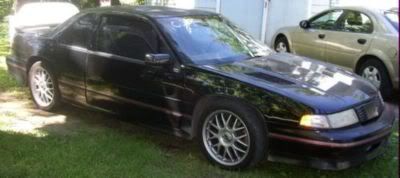With new supercharger designs you get boost instantly. ie. The Whipple style supercharger, next best being the Eaton style, then the Centrifugal type. With a supercharger you can develope PSI at low RPM and bring up the CFM through the RPM range. Any excess pressure can be by-passed through a blow-off valve. The CFM will be constant as long as your PSI is up. As long as you keep your pressure regulated you should be OK. If you use a turbo it takes time for it to spool-up because you need the CFM output from your exhaust to turn the thing. When you punch it you will need alot of N/A power before you get the boost.
Turbo's are much higher maintenance anyway. Due to the high temps, they practicaly need there own oil cooler to not melt-down under any prolonged conditions. They recieve so much heat from the exhaust system plus they are spinning so fast there is a hugh amount of frictional heat developed within the bearings. At least with the supercharger you only have the bearing heat to worry about. Also sinch the Blower design (commonly) is much better at dissipating heat that helps too.
I see no preformance/durablity advantages to using a turbo on anything but Ricers and Diesels.
Lyle
Turbo's are much higher maintenance anyway. Due to the high temps, they practicaly need there own oil cooler to not melt-down under any prolonged conditions. They recieve so much heat from the exhaust system plus they are spinning so fast there is a hugh amount of frictional heat developed within the bearings. At least with the supercharger you only have the bearing heat to worry about. Also sinch the Blower design (commonly) is much better at dissipating heat that helps too.
I see no preformance/durablity advantages to using a turbo on anything but Ricers and Diesels.
Lyle



 right on. Into a Fiero.
right on. Into a Fiero.
Comment